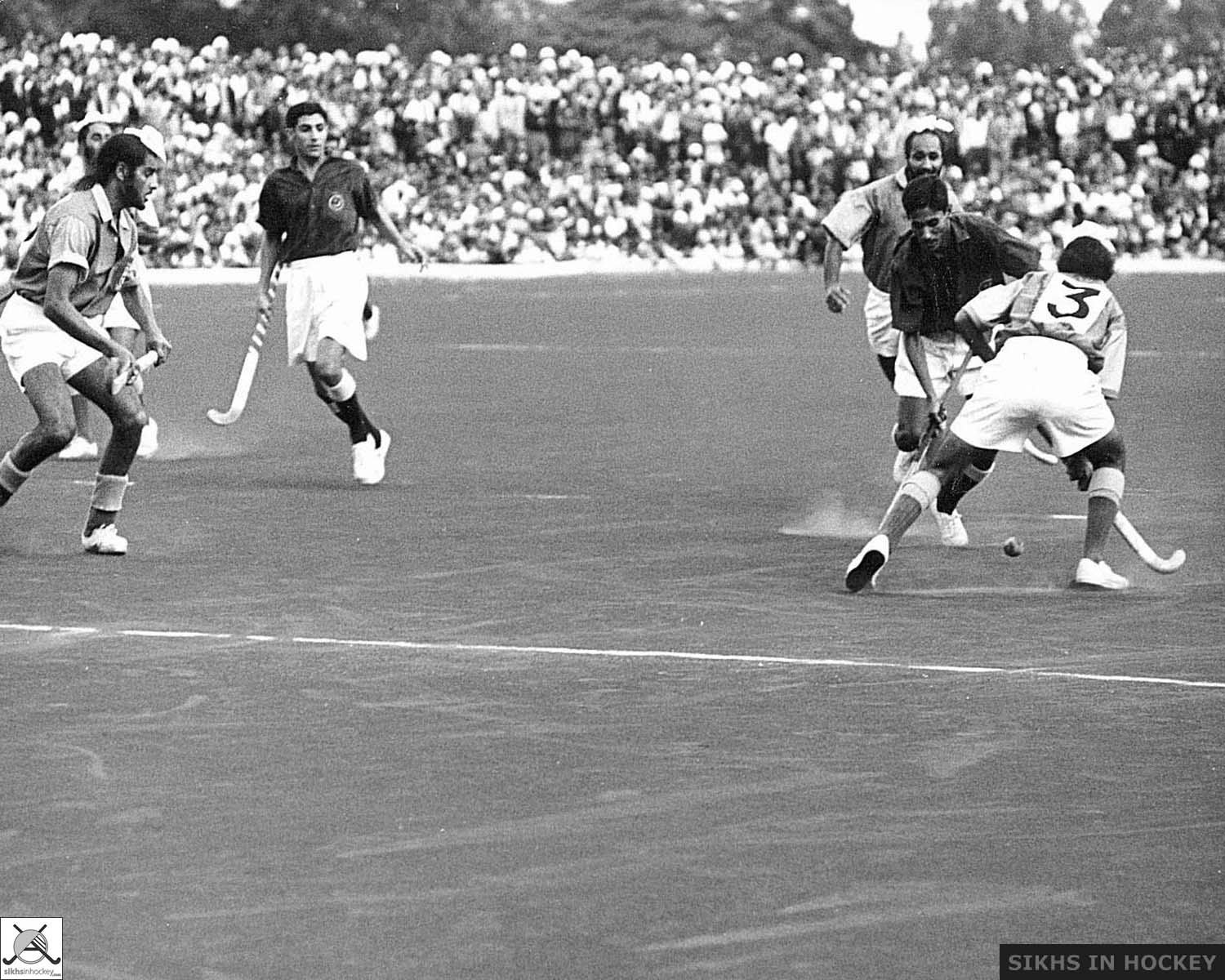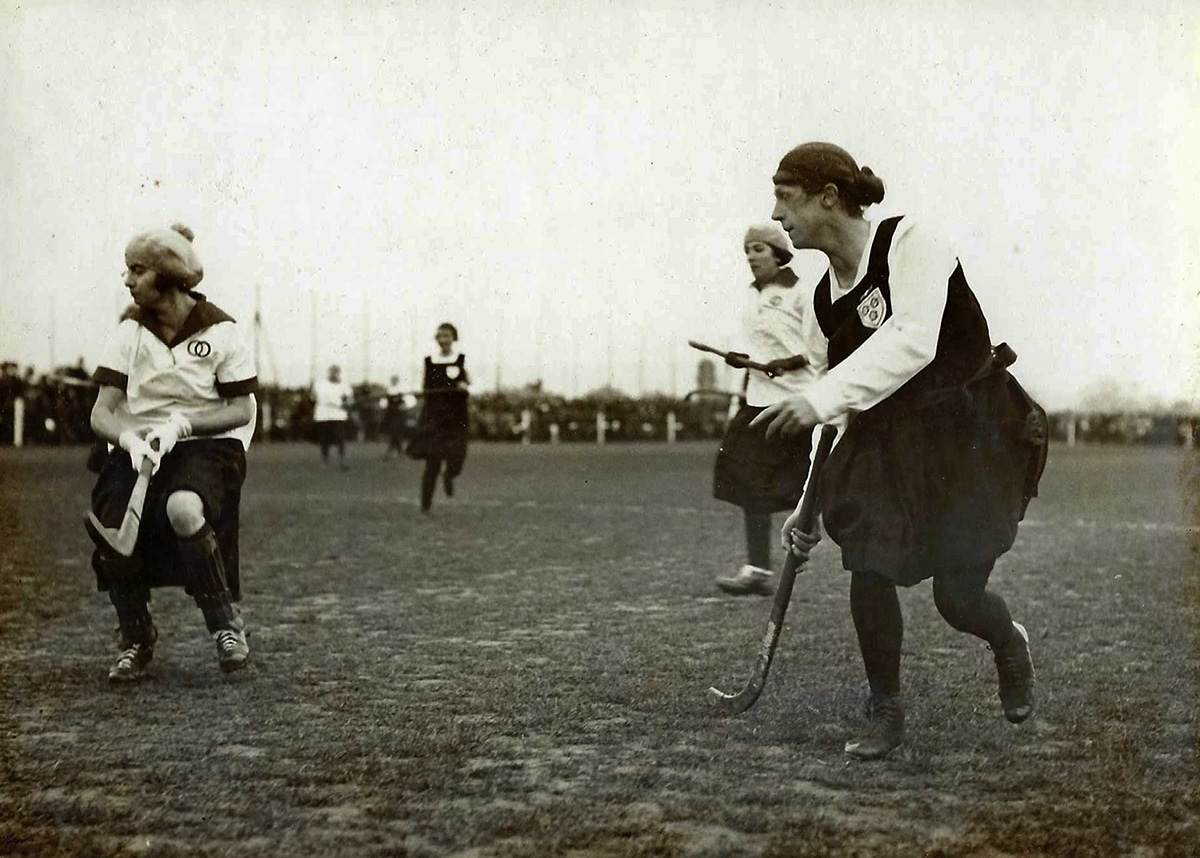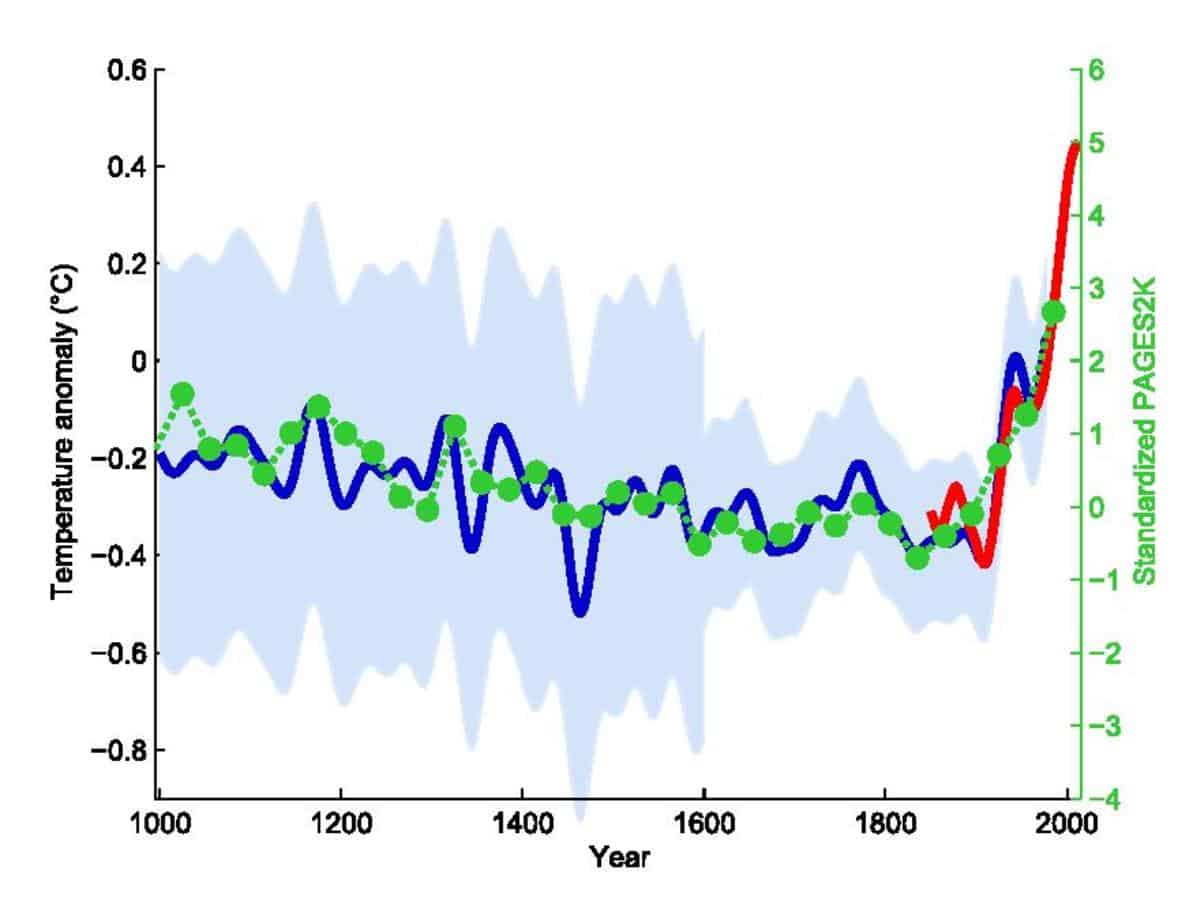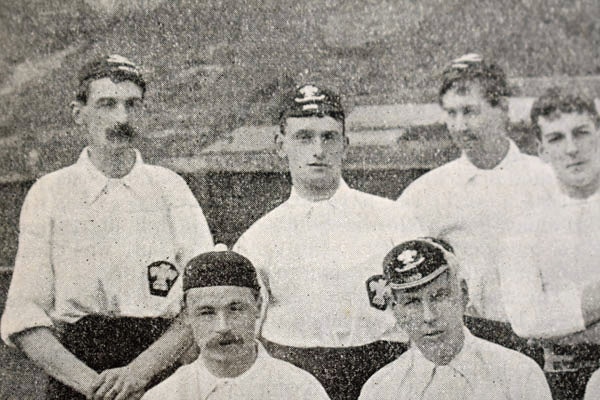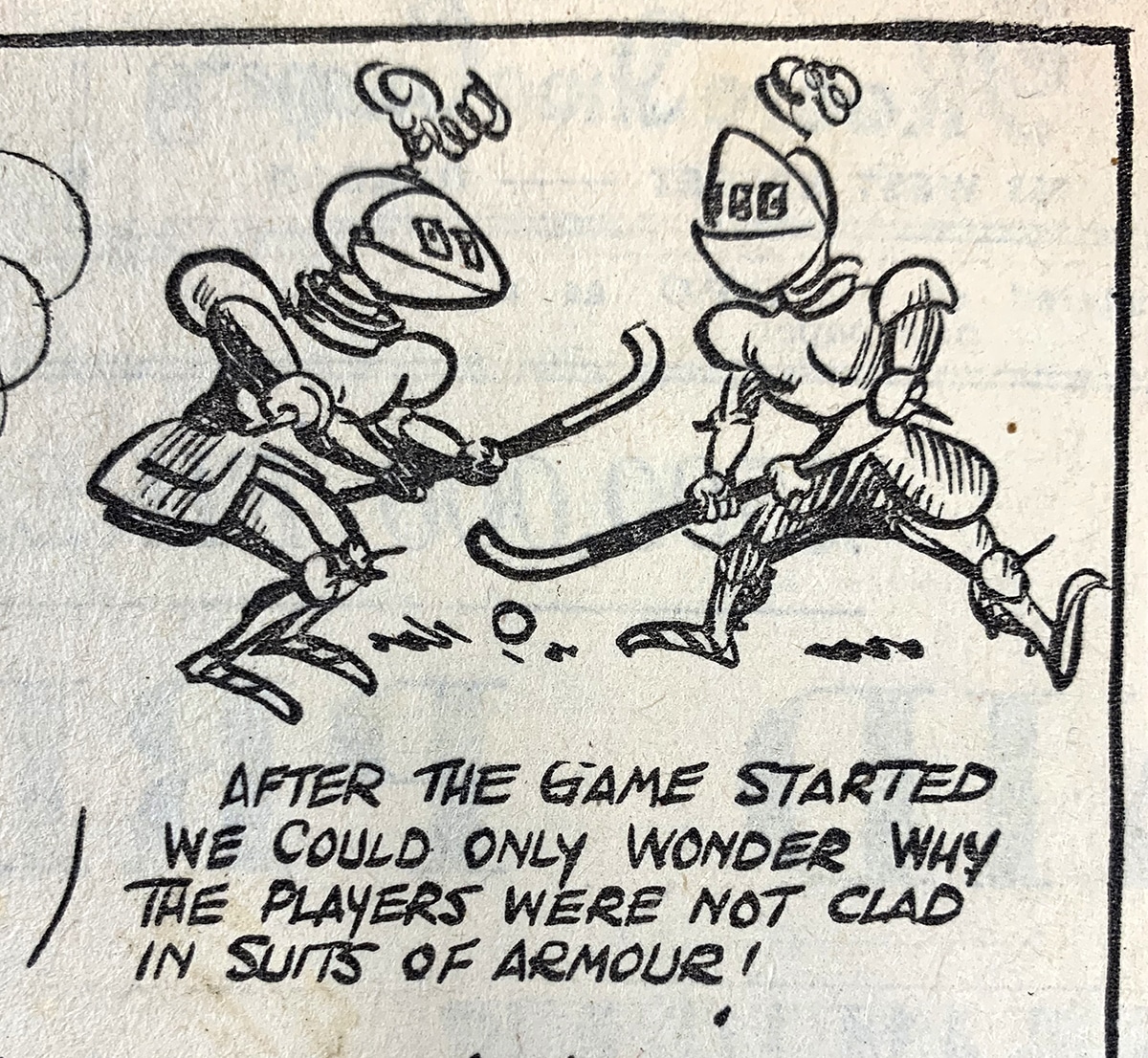By Surjit Singh Rihal OLY, Kenyan hockey international 1969-1981
Sikhs in Hockey | Captains | Surjit Rihal
In Kenya, most hockey was played on murram grounds, a red volcanic soil. This was the case for both local tournaments and international matches. The surface used to be hard and slippery, often there used to be a lot of dust blown from the surface by the wind. I wonder how the umpires managed to keep their eyes on the ball in that dust and the bright sun.
In those days for penalty corners and long corners, all 11 defenders used to defend from the goal line. The groundsmen used a mat to spread the loose soil before using chalk powder to mark the field. The best shoes for that surface were plimsoles (trainers). I used plimsoles made by Bata Shoe Company. Some of the grounds in India and Pakistan were bare and others had grass. We had to train on both murram and grass grounds before going to India and Pakistan to play.
The grass ground in Kenya we practiced on was the cricket ground at Sikh Union Club Nairobi. The surface was hard, uneven and had dry grass. It was a dangerous surface; it was difficult to control the ball and receive the hard hits. We played wearing football shoes on the hard, uneven ground; some players often twisted their ankles because of the uneven surfaces. We had to practice on grass before travelling overseas to play, especially in Europe. The turf grounds in India and Pakistan had short grass and were smooth, fast grounds. The turf grounds in Europe had bigger grass with more water. The grounds were a bit slow but required more strength to play on them.
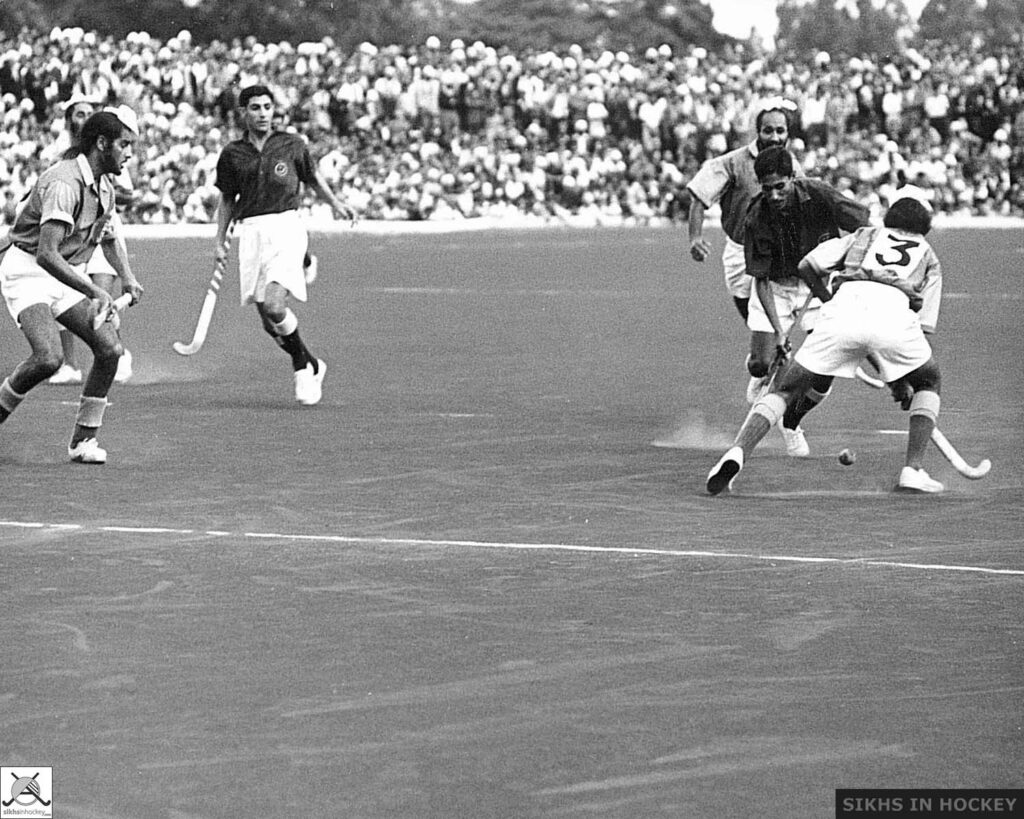
Kenya vs Pakistan at City Park Stadium, Nairobi in 1960. The players compete on a murram pitch of rolled, red volcanic soil baked hard by the sun.
Photograph courtesy of Dil Bahra, Sikhs in Hockey
In July 1975, Kenya was invited to take part in the Pre-Olympic Hockey Tournament in Montreal, Canada. We were told that we would be playing on an artificial grass surface there. We had not seen or played on that surface.
After training on the murram ground at the City Park Hockey Stadium, Nairobi and the grass ground at Sikh Union Club, we travelled to play practice matches in Europe (Switzerland and Poland) before proceeding to Montreal, Canada. Players from Sikh Union Club Nairobi were not selected for this tournament as they had gone on a tour of India and Europe in May-June 1975 with their club team and had missed most of the training sessions with the Kenya national team in Nairobi. I feel the team would have benefited from the experience gained by these players after their tour of India and Europe. I had not gone on that trip with my Sikh Union team, so l was selected to play for Kenya in Montreal. In this new young team, none of us had played in Canada and only three or four of us had played in Europe before this tour.
We reached Montreal on 15 July 1975. The AstroTurf ground (Percival Molson Memorial Stadium) was at the McGill University, and the teams were also accommodated in the University dorms. We were happy to meet our former teammate, Jagjit Singh Kular OLY (1968 & 1972 Olympian) who had moved to there from Kenya in 1973 after competing at the men’s Hockey World Cup in Amsterdam. He had settled in Montreal and worked as a coach. Everyone in the team was very excited to see the AstroTurf pitch and we walked quickly to the ground with Jagjit to practice on it. The surface looked like a beautiful green carpet. We ran on to the ground, a few of our players fell as they tried to skid to reach for the ball, or their foot got stuck in the turf as they tried to turn and change direction. When we hit the ball across the ground, it did not travel in a straight line; the ball travelled in a curve. It took us one to two hours to get used to get the ball at the correct spot at penalty corners.
It was easier to play on AstroTurf when it was watered compared to the dry surface. The groundsmen used hoses to water the ground just before the start of the match and then water it again at halftime. I liked the AstroTurf surface as it was easy to stop the ball. We did not have to wait for the ball to reach us as it came smoothly on the surface and the game got faster. In this tournament on the wet surface, we played with leather balls used on grass grounds. About 20 leather balls were used in each match because the leather used to swell and become loose because of the water on the ground. A few friends of mine from the Canadian team offered their astroturf shoes to me to play with. I tried but the shoes were too heavy, so l played wearing my football boots. The photo below is of our match against Pakistan. You can see the players wearing football boots and playing with a white leather ball.
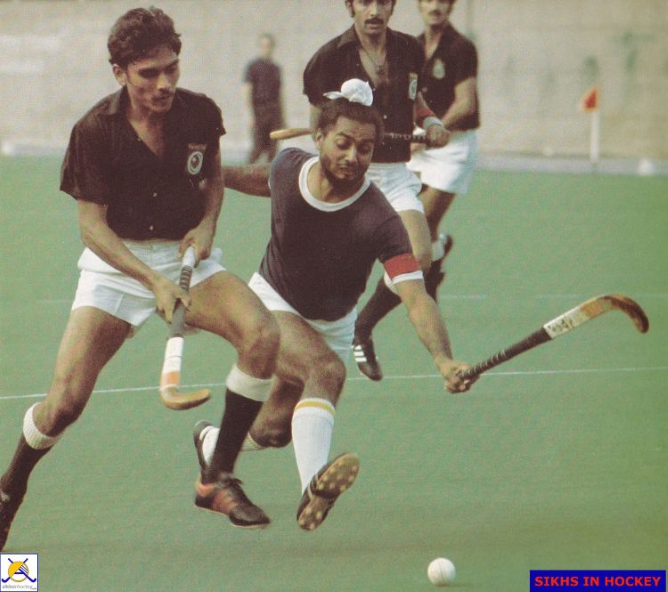
Mohammed Saeed (left) and Surjit Singh Rihal (tackling) battle it out during the Kenya vs Pakistan match at Montreal in 1975. In the background are Abdul Rashid and Akhtar Rasool of Pakistan.
Photograph courtesy of Dil Bahra, Sikhs in Hockey
I remember that in Munich for the 1972 Olympic Games, there were about eight grass hockey grounds. In Kuala Lumpur for the 1975 men’s Hockey World Cup, a few matches were either cancelled, postponed or completed on other grounds because of heavy rain. In Montreal during the 1975 Mini Olympics, all the matches were played on one ground, one after the other with a short break for teams to change over and allow the ground to be watered at the Molson Stadium.
The German team arrived a night before the start of the tournament. They needed no practice on the AstroTurf as they had trained on similar grounds in Germany and were ready to play. We played our first international match on AstroTurf against Germany on 19 July 1975. Our young team lacked experience yet slowly settled down on the new surface and competed well against the Germans. We lost the match 1-4. We lost our matches against Pakistan 0-2 and Great Britain 1-3; drew against Canada 2-2 and won against Mexico 7-2.
With the success of playing matches on one watered ground it became possible for FIH to allow the Montreal 1976 Olympic hockey tournament to be played on AstroTurf. Leather balls were replaced with the Kookaburra and the sports manufactures introduced proper artificial turf shoes in 1976.

